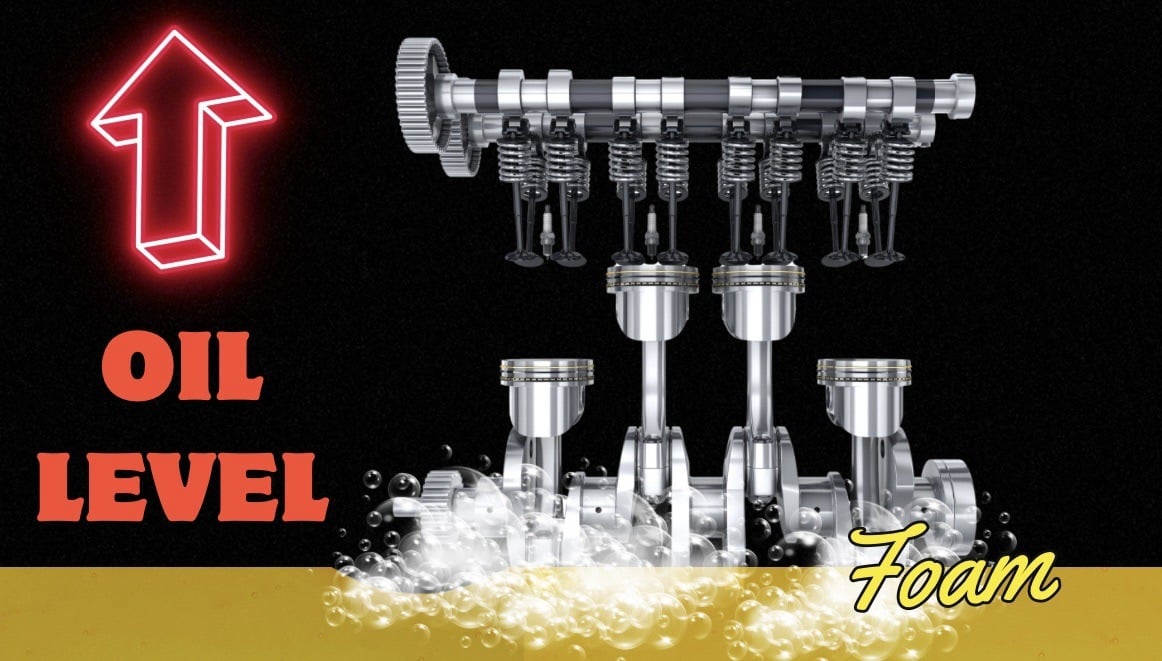Imagine stepping into the lab one crisp morning, greeted by the familiar hum of machinery and the subtle scent of/ oil in the air. Today, we delve into a topic that resonates with many of our readers: the vexing issue of rising engine oil levels. It’s a scenario that’s as common as it is concerning, touching upon the very integrity of our beloved engines. So what can cause your oil to rise.
The Simple Misstep: Overfilling
Our journey into solving rising oil levels begins with the most straightforward culprit: overfilling. It’s a tale as old as time, or at least as old as engines themselves. The eagerness to ensure our engine is well-lubricated can sometimes lead us to add that tad bit extra oil, unknowingly setting the stage for potential lubrication issues and, in dire cases, engine fires. The art of adding oil demands precision – aim to slightly underfill, then patiently allow the oil to settle before completing the top-up. An overfilled engine risks submerging the crankshaft, inducing oil foaming and thus compromising lubrication efficiency.
The Stealthy Intruder: Coolant Leaks
As we delve deeper, coolant leaks present themselves as a more insidious cause of rising oil levels. These leaks are the chameleons of engine issues, often remaining undetected until substantial damage has occurred. However, through the lens of oil analysis, signs of a coolant leak, such as the presence of sodium, potassium, and water, can be unveiled. This early detection offers a beacon of hope, allowing for intervention before the leak escalates into a catastrophic failure.
The Unseen Diluter: Fuel Dilution
Further into our exploration, we encounter fuel dilution – a phenomenon capable of subtly increasing oil levels. This condition not only raises the oil volume but also diminishes its viscosity and flash point, undermining the oil’s protective capabilities. Here again, oil analysis serves as our guardian, alerting us to the infiltration of fuel into our oil and enabling us to address the issue before it inflicts further harm.
The Keystone: Accurate Oil Level Readings
The cornerstone of managing oil levels lies in the accuracy of our measurements. A reading taken too hastily after engine shutdown or on an uneven surface can mislead, painting an inaccurate picture of our oil level. Such diligence is especially crucial for marine engines, where the undulating embrace of the sea can skew readings.
The Unveiler: Oil Analysis
At the heart of our quest to solve the mystery of rising engine oil levels lies oil analysis. This indispensable tool not only aids in diagnosing the aforementioned issues but also serves as a compass, guiding us through the murky waters of engine maintenance. When submitting an oil sample, it’s imperative to note any concerns regarding rising oil levels, allowing the analysis to be tailored to uncovering the root cause.
In conclusion, the battle against rising engine oil levels is multifaceted, demanding vigilance, precision, and a proactive stance. Whether it be through avoiding overfilling, detecting coolant leaks, addressing fuel dilution, or ensuring accurate oil level readings, the key lies in understanding and action. And when in doubt, oil analysis stands as a steadfast ally, offering insights that pave the way to resolution. Stay vigilant, stay informed, and keep that dipstick level steady. For further guidance or to share your experiences, don’t hesitate to hit the ‘Contact Us’ button on this page. Your journey to mastering engine oil levels is a venture we’re eager to support.
